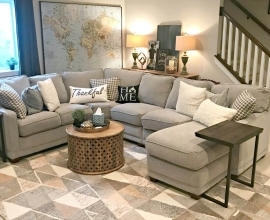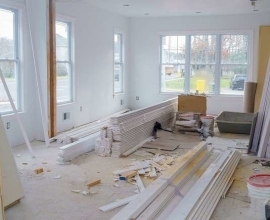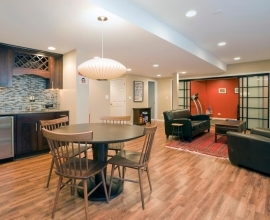How to Remodel Your Bathroom From Start to Finish
A bathroom makeover is an easy way to spruce up your home. But before you start taking measurements for an open shower, you should take the time to plan out your bathroom renovation step-by-step so you know exactly what you’re getting into.
How Much Does a Bathroom Remodel Cost?
According to Angie’s List, the average total cost of a bathroom remodel is between $10,000 – $15,000, with labor costs taking up at least 20% of the budget. By going the do-it-yourself remodeling route, you can expect to save as much as a few thousand dollars.
Curious about how to remodel a bathroom yourself? Take a look at our step-by-step guide to figure out the best way to tackle your bathroom remodel.
Prep for Your DIY Bathroom Remodel
Establish Your Bathroom Makeover Design
Before you do any bathroom remodeling yourself, you should settle on a new design that fits your vision, as well as your skill set. There are so many different ways to approach a bathroom makeover, ranging from swapping out the vanity to gutting the space and starting over from scratch.
Here are a few design elements you absolutely need to nail down before you start your bathroom renovation:
Color scheme:
Are you a fan of blue hues? Or perhaps shades of gray fit the rest of your decor? Know ahead of time to make sure your new bathroom tiles don’t clash with your choice of paint.
New fixtures:
Will you replace or remodel your shower/tub? Are you installing a new sink? Replacing one or both of these fixtures will add to your project time and budget.
Storage spaces:
Where will you keep your towels and toiletries post-remodel? If you’re removing a closet to expand the room, make sure you have shelving or cabinets to make up for the lost storage space in your bathroom.
Location of utilities: Do you know where the electrical wiring and plumbing pipes are located? Make sure you have accurate measurements for each of these so you don’t end up needing expensive repairs.
Location of utilities:
Do you know where the electrical wiring and plumbing pipes are located? Make sure you have accurate measurements for each of these so you don’t end up needing expensive repairs.
Gather Your Remodeling Tools and Supplies
Of course, you may need a few things outside of your essential homeowner tool collection, but the exact tools required will vary based on your renovation plans. But these are a few essential tools to have on hand for any bathroom renovation.
Steps to Remodel a Bathroom
1. Remove or Demolish Bathroom Fixtures
Assuming you’re partially or totally renovating your bathroom, this is where you’ll start removing drywall and any fixtures you’re replacing. Remodeling a bathroom yourself isn’t all that hard, but there are a few steps you should follow to avoid any costly mistakes during the demolition phase.
Tips for Gutting a Bathroom:
Start by draining and removing the toilet to avoid any unpleasant spills.
Next, if you’re removing your bathtub, cover up the tub and start removing the bath tile down to the studs. This is necessary in order to rework the plumbing to fit your new shower/tub design.
Remove the insulation from your walls where necessary. Do not use a hammer on insulation, instead use a reciprocating saw to cut out the panels. A safety mask, gloves, and goggles are a necessity.
Finally, remove cabinets, vanities, mirrors, floor tiles and any other features you plan to replace. When removing tile flooring, it’s a good idea to remove the baseboards and reinstall them later.
2. Install Your New Shower or Tub Basin
After you’ve gutted your bathroom, its time to start installing your new fixtures. For a shower or tub replacement, you’ll want to pick a pan or basin that fits your new decor, as well as the space where your current tub sits.
Shower Remodeling Design Choices
In terms of shapes, you generally have three choices:
Rectangular
Square
Pentangle (base with one corner cut off)
The base shape you choose will determine your layout, so make sure you take into account the other features of your bathroom beforehand, including the location of the door. You could also consider installing a combination shower and bath tub if you have the space.
If there are any signs of rotting wood or water damage to your subfloor, you should replace it before installing your new shower to prevent further damage.
Source: https://bit.ly/3cymoME







